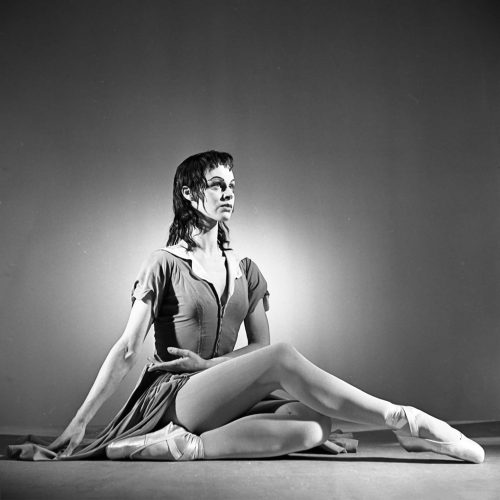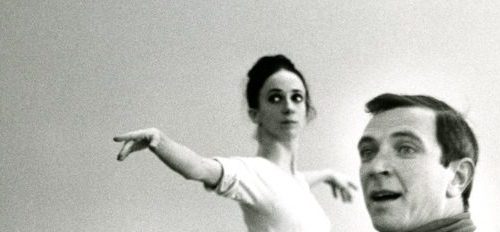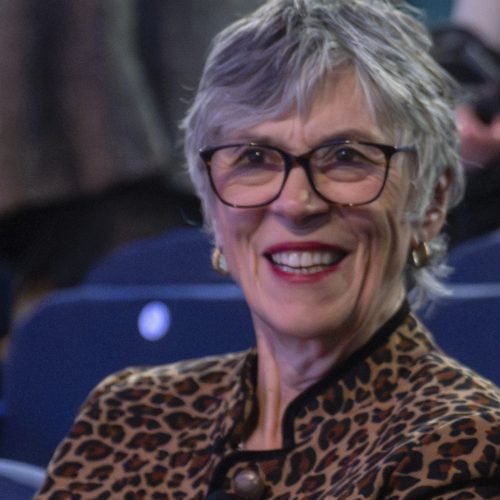By Tamasin Doe, fashion writer and author of several books including Textile Design in the Digital Age (Carlton, 2015), editor of The Fashion Book (Phaidon, 1998)
Fashion and ballet have a symbiotic relationship, each drawing on the other.
Twice a year, fashion designers must cast around for hot influences. These might come from anywhere but time and again, these cultural heat-seekers turn to ballet, which influenced modern fashion for as long as it has existed. Yes, the choreography and music are inspirational, but fashion’s relentless search for the perfect form to dress so often leads it back to ballet. The reason why the style of ballet is so attractive to designers is the dancers themselves. Ballet offers costumes for the human form at peak fitness; elongated limbs charged with energetic, artistic endeavour. In short, an ideal model. Consequently, the costume that has developed from and for ballet has a unique purpose that enables easy movement and heightens artistry. It’s a compelling combination.
The interaction between ballet and costume existed from the first step when 17th century performers were costumed to the point of near disablement beneath weighty court dresses and hip panniers. As the artform developed, so did the distinct nature of ballet costume. By the 19th century, the dress of dance incorporated shorter dresses that we still recognize as the romantic tutu.
1909, when the impresario and artistic revolutionary, Sergei Diaghilev, launched Ballets Russes in Paris, he also directed an artistic firework that exploded at the heart of its culture. Fashion’s early designers were dazzled by the company of dancers, choreographers and artists. Léon Bakst, who created thrilling, and scandalous costumes, magnetized other avant-garde artists and designers. In 1917, Pablo Picasso designed costumes for the ballet Parade and remained close to the Ballet Russes until 1924. That year he contributed the stage curtain to Le Train Bleu, based on a story by the writer and artist Jean Cocteau. Its costumes were created by the already established designer Gabrielle Chanel. Her contribution marked an important pivot-point for fashion.
The creative freedoms of Ballet Russes arrived just as women were uncaging their bodies. Corsets were rejected, comfort was expected. Without the trimming and shaping of whalebone, a new type of dressing was required. It needed to skim the natural contours of the body, maybe even stretch with it. Chanel’s greatest innovation (there were many) was the delivery of knitted fabric in a form that unified comfort and chic.
‘Jersey is the hardest fabric to work with, it’s a poor fabric; Lord, do I know it! I started out with it’, she later declared. In 1913, Chanel had selected this machine-knitted fabric, previously used for men’s undergarments and sailors T-shirts, to become her instrument of freeing women from the confinements of ungiving woven material. Chanel expanded her business with coastal boutiques in Deauville and Biarritz where her outdoorsy, sporty elegance perfectly matched the mood.
Le Train Bleu told the story of entitled dilettantes travelling towards one such summer playground. The cast looked ready for swimming and tennis rather than ballet. Chanel and ballet were a perfect match. The garments we today call ‘body-con’ and casual are firmly rooted here. The stretchy ease of Chanel’s holiday wardrobe was the first sighting of what we would later take for granted: guaranteed comfort.
Despite the promise of modernity and all it could offer, fashion designers never forget the impact of the romantic tutu shape and tulle, the diaphanous net fabric that forms its skirt. The artist, and Chanel’s friend, Christian Bérard, designed the costumes for Ballets Russes’ production of Cotillon in 1932. They were made by costumer Barbara Karinska, who went on to become chief designer for the New York City Ballet. She was one of the pioneers of making tulle costumes using layers of different colours, a technique later used by the great Anglo-American couturier Charles James.
His epic ballgowns are ranked alongside the landmark designs of Christian Dior who characterized the desire for curves (defined bust; cinched waist; voluminous skirt) with his ‘New Look’ collection of 1947. World War II had arrested the natural urge to move from the slender silhouettes of the 1920s and 1930s to womanly shaping. As fabric once again became available, the ‘New Look’ was finally made possible. This return to exaggerated femininity was regarded as retrograde by some. Why, they asked, would you return to boned bodices just 30 years after being released from them? The simple answer is that fashion seeks newness and a fierce contrast, especially at times of war. Silhouettes were already changing before the WWII but the need to mark the glorious release from the visual and practical privations of war was visceral.
‘The big news is movement’ enthused Harpers Bazaar in 1948. ‘Movement in skirts that plunge down at one side or swoop out behind… Dior calls his backswept skirts and jacket ‘ailé’, or winged. They have tremendous vitality… Bodices are simple. Skirts swirl, or dip in exciting, irregular lines… Skirt interest is often between knee and hemline; shirring or stiffening are reserved for the bottom of the skirt.’
Once again, it was ballet that provided a model for the shifting priorities of fashion designers, albeit an extravagant vision. The correlation between ballet and haute couture isn’t only implied. In 1949, Christian Dior created an haute couture evening dress, dubbed Cygne Noir (Black Swan) in ebony satin and velvet, which features panels of silk to create the appearance of a gigantic bow at the hips. “My dresses make a princess out of every woman”, said the great man and it was this was his intention that women should take centre-stage.
The style had been embedded in popular imagination by another legendary couture figure, Jacques Fath. It was he who designed dancer and actor Moira Shearer’s costumes for the ground-breaking British film, The Red Shoes, in 1948.
Ballet has also given us a foundation accessory in the form of the ballet pump. The original flat ballet shoes are credited to the innovative 18th century dancer, Marie Camargo. As a ballerina of the Paris Opéra, Camargo directed her shoemaker remove the heels of her shoes to better enable her technique. This charming style promised all women the practicality and comfort of a flat, but it wasn’t until 1941 when designer Claire McCardell commissioned the Metropolitan Opera House shoemaker, Salvatore Capezio, to create wearable shoes based on his dance slippers. He simply added a hard sole. The highly influential editor of Harper’s Bazaar, Diana Vreeland, directed women towards ballet slippers, which remained unrationed in World War II. The ballet flat was launched.
Once again it was a film and its star, Audrey Hepburn, which brought the idea to the point of real fashion ignition. Born in Brussels in 1929, Hepburn studied ballet with Marie Rambert. After a few West End musicals and a few minor film parts, she was spotted by the author, Colette, to star in a stage version of her novel, Gigi. With this, Hepburn’s career took off. Her debut starring role as the Princess in Roman Holiday won her an Oscar. Hepburn’s screen presence was bewitching. She declared herself to be lacking technique as a screen actor because she was untrained but as Billy Wilder, who directed her in Sabrina said, ‘She was just born with this kind of quality and she made it look so unforced, so simple, so easy.’ Physically, Hepburn was the epitome of instinctive, balletic grace.
This charm elevated Hepburn to the status of fashion icon. Anything she wore became a must-wear overnight. Roman Holiday and Sabrina turned out to be accessories moments. Alongside silk scarf, tied playfully at the neck, ballet flats are still remembered as a Hepburn flourish. When her effects were sold at Christies in 2017, the collection included pairs of ballet slippers. The value of each? More than a Givenchy dress or Yves Saint Laurent Smoking suit from Miss Hepburn’s immaculate wardrobe. The perfect synthesis of ballet and fashion exists in that single item, with its (usually) non-functioning cord and bow. Its shape and proportions vary slightly through the decades as fashion drifts but always the ballet pump remains.
Dancers and designers have always collaborated, both on and off the stage. A fashion designer might not consider themselves entirely rounded in their practice until they have costumed a dance production. Vivienne Westwood, Valentino, Jean Paul Gaultier, Viktor & Rolf, Stella McCartney and Prada are a few of those who followed Chanel to costume productions, but most have challenged themselves to create garments that allow complete freedom of movement.
At the time of writing, the style is called balletcore, ‘core’ being the suffix welded onto the back end of every trend to modernize it from earlier incarnations. It focuses more on the practice wardrobe, mixing comfy, sloppy sweaters with dance tights. It is just one incarnation of a rich and broad wardrobe for fashion designers to rummage through. Ballet has been an enduring inspiration because it has an option for any event, regardless of whether it requires something either a supremely comfortable or a supremely glamorous. From a commercial point of view, it is valid to ask the question, where would modern fashion be without the influence of those stretch fabrics, leotards, tie-wraps, ballet pumps and tutus?



